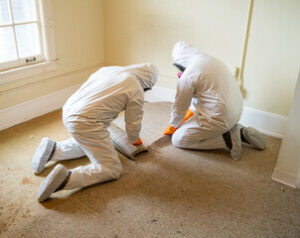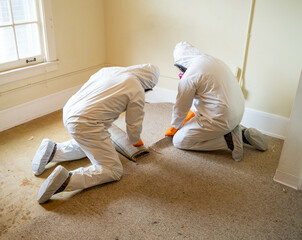Test results indicate that radon levels can be reduced in many homes. Real estate agents can help buyers and sellers understand the importance of radon testing and mitigation.
Radon Testing Colorado Springs provides a more accurate picture of average year-round levels. Homeowners can obtain these kits from state radon programs and online retailers.

Radon is a colorless, odorless gas that can cause damage to your home and your health. It is the number two cause of lung cancer. The only way to know if you have radon in your home is with specialized testing. Many people get a short-term test as part of a regular home inspection or when they are going to buy or sell a house.
However, it is important to understand that short-term testing cannot accurately show a home’s year-round average radon level. Short-term tests can also give a false negative, leading someone to decide not to mitigate even though they should.
The reason is that radon levels can vary from day to day and season to season. For example, the radon concentration in your home may be at one level during the winter but can rise dramatically during the summer. This is because of the change in weather conditions and the ventilation in your home.
You will want to ensure that your radon testing is done by an organization that is properly accredited. The accreditation process helps to ensure that the lab has clean equipment and trained employees. The best certification is through a state or national accreditation program. These programs set standards for calibration, cleanliness and competency, which are then verified through an independent auditing company. The auditing company makes sure that the laboratory meets those standards, which in turn increases the accuracy of the radon testing results.
There are several types of short-term radon testers that can be used to measure the radon in your home. These include charcoal canisters, electronic measuring devices and passive radon detectors. These detectors are designed to be placed in the lowest livable level of your home, which is typically the basement. They must be kept in closed-house conditions during the test period, which lasts from 2 to 90 days. That means keeping all doors and windows closed, except for normal entry and exit; turning on your air conditioning system only to re-circulate interior air; and shutting down fans and other air-moving systems in the home.
Long-term testing takes measurements over an extended period of time, typically from three months to a year. Using this method allows a more accurate representation of a home’s radon levels, since radon tends to fluctuate from day-to-day and season-to-season. Long-term tests can also provide a more realistic picture of your home’s average radon level, which is often higher than short-term test results indicate.
This type of testing requires closed house conditions for the duration of the measurement. The homeowner must keep windows and doors closed (except for normal entry and exit) and run the heating and ventilation systems as they would normally. During the testing period, the device should be located in the lowest level of the house, such as the basement.
Short-term and long-term testing devices can be purchased from many hardware stores and online retailers. It is important to purchase the most reliable and accurate test available, as the results will impact your family’s health. Look for a radon test kit that is listed with the EPA’s National Radon Proficiency Program, as well as the Consumer Product Safety Commission’s National Radiation Map, and a laboratory with a high level of accreditation (typically ISO 17025), as this provides a known framework for quality control, reducing careless errors.
Several long-term radon testing methods are available, such as alpha track, thermo luminescent, and electret ion detectors. Alpha track detectors use a piece of plastic that, when exposed to radon and its decay products, leaves microscopic radiation tracks that can be chemically processed for analysis. TLD and electret ion detectors operate by measuring the voltage reduction on a teflon disk when ions from radon and its decay products strike the disk. The resulting electric signal is then measured by electronics to determine the radon concentration.
Continuous radon monitors are also available, but they are expensive, complex, and require expert installation and operation. They are primarily used in mitigation work, confirmation measurements, and specialized residential testing. They are not practical for screening measurements or as part of a real estate transaction.
Radon is a colorless, odorless gas that can seep into homes and other buildings through the ground. It forms when radioactive metal atoms from uranium in natural stone decay. These atoms can be inhaled, damaging lung cells and possibly causing cancer. The EPA recommends that you test your home for radon. It’s a relatively inexpensive and quick way to find out whether your home has dangerous levels of radon.
There are a number of methods for testing for radon in your home or workplace. You can purchase do-it-yourself kits at most hardware stores or hire a professional radon measurement provider. These professionals can use a variety of methods, including charcoal canisters, liquid scintillation detectors, electret ion chambers and continuous radon monitors. The choice of method depends on your particular circumstances and the level of accuracy required.
When the results of a short-term radon test are above 4 pCi/L, it’s important to follow up with a long-term test. This will provide a more accurate picture of your home’s year-round average radon level.
For a more accurate radon test, you can also measure for thoron, which is produced by the same process as radon. Thoron measurements can be made using a dual alpha track detector. This technique measures the different half-lives of radon and thoron and utilizes two diffusion chambers with different diffusion resistances to distinguish between the two isotopes.
The most popular type of radon testing device is a continuous radon monitor (CRM), which is placed in the lowest occupied floor of your home and continuously measures the radon concentration. The EPA has determined that these devices are the most reliable and accurate method for monitoring radon in residential properties. They are also the least expensive and most convenient to use, requiring only annual calibration.
You should test your home if you’re thinking of making any significant changes to the way you use your house, such as turning a basement into an office or extra bedroom. In addition, you should retest your home after the work is done to ensure that the level of radon has been reduced.
Radon mitigation is a process of installing fans and PVC pipe in homes to draw out the radon gas, venting it to the outside. This is typically done when a home has been tested and the test results indicate high concentrations of radon. The mitigation system can be installed by qualified radon professionals and can reduce or eliminate the radon levels in a building.
The most common type of radon mitigation is a sub-slab depressurization (SSD) system. This uses a fan and PVC piping to pull the soil radon gas away from beneath a basement floor or slab on grade, then vents it to the outside above the roof line. A well-designed and properly installed SSD system can significantly reduce radon levels in a home.
Other types of radon testing include continuous samplers and electrets. Continuous samplers have a fan that blows air over an open plastic chamber, which collects the radon gas in the chamber and exhausts it to the outdoors through a PVC pipe. These devices are used for confirmation measurements and for long-term radon tests, but they require careful placement, maintenance, and calibration. Electrets, which are semi-permanently electrically charged materials, lose their charge when they come into contact with radiation, and the voltage reduction on the electret can be used to calculate a radon level.
While any radon test can provide useful information about the level of radon in a building, only a professional can offer a comprehensive assessment and recommend the most appropriate remediation method. A reputable radon measurement and mitigation professional will be certified through an approved program such as the National Radon Proficiency Program or the Radon Proficiency Program. Lists of currently certified professionals can be found on these programs’ websites and are searchable by zip code.
Homeowners are encouraged to perform short-term radon testing any time of year, particularly during the winter when a house is heated and the windows are closed. They should follow the test kit instructions closely, especially when closing doors and windows, and only testing the lowest lived-in level of a home. If the results are above 4 pCi/L, a homeowner is strongly encouraged to consider mitigation.

